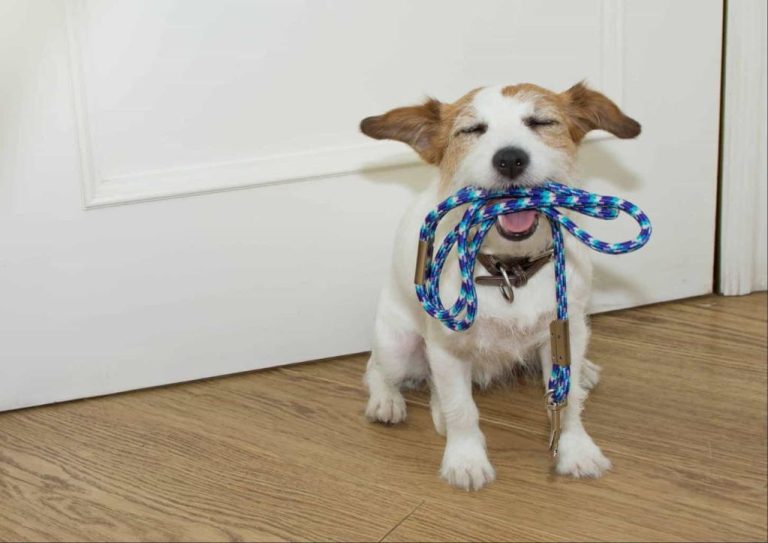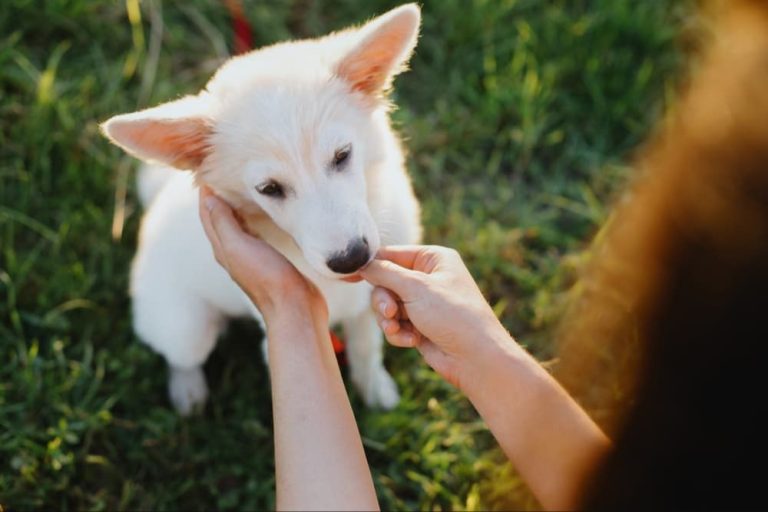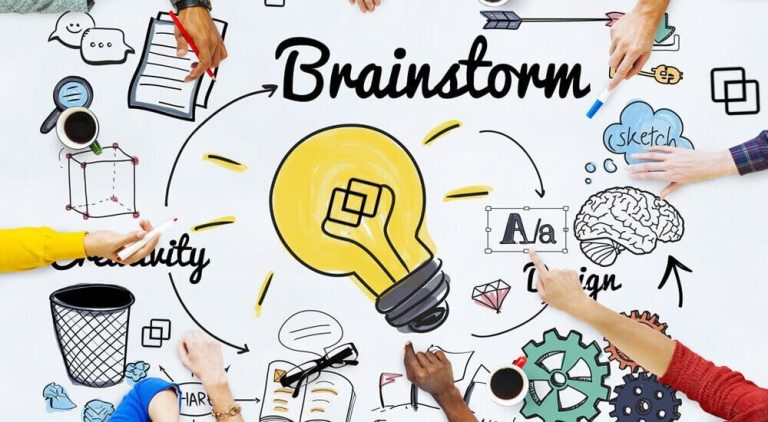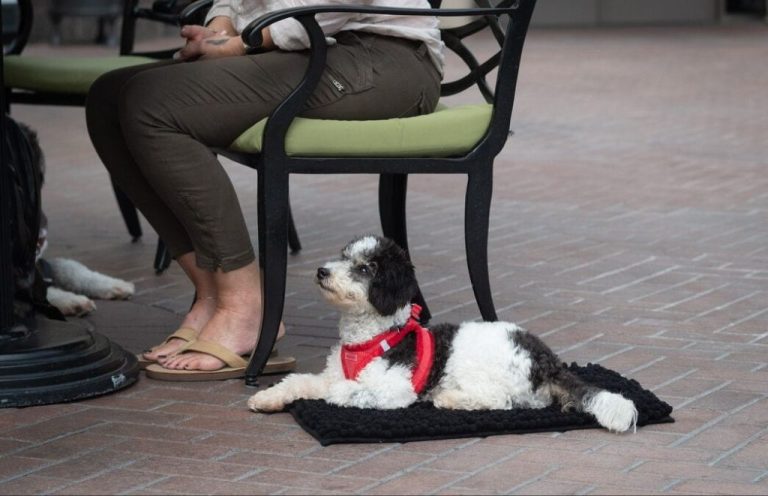Teaching Your Dog To “”Drop It””: Preventing Resource Guarding
Introduction
Resource guarding refers to a dog displaying protective and possessive behaviors over items or spaces, often through growling, snapping, or biting when approached. It’s problematic because it can lead to aggressive incidents, especially with children or strangers unfamiliar with the behavior. The goal of this article is to provide dog owners with tips on preventing resource guarding behaviors from developing, or managing mild cases before they escalate.
Signs of Resource Guarding
Some common signs that a dog is resource guarding include growling, snapping, stiffening up, or freezing when approached while in possession of items they highly value. These items may include food, treats, toys, beds, or other objects the dog perceives as valuable resources. Dogs may exhibit subtle body language changes like licking their lips, pinning their ears back, or avoiding eye contact when guarding. They may also become hyper-focused on the item they are guarding.
Growling or baring teeth are clear warnings that the dog feels threatened about losing something they value. Snapping is a more serious behavior. Freezing in place or becoming suddenly stiff when approached can also signal resource guarding. These dogs may react defensively to any attempt to take away or interfere with their valued possession.
Causes of Resource Guarding
There are several reasons why dogs may develop resource guarding behavior.
Lack of proper early socialization is a common cause of resource guarding. Puppies that are not exposed to handling, petting, and having objects gently taken away and returned can become fearful and anxious about losing items as adults. Anxious or fearful dogs are more likely to guard resources.
Ongoing anxiety in general can also lead to resource guarding. Dogs that feel chronically stressed may become overly protective of resources like food, toys, and resting areas. This provides them a sense of control.
Finally, past trauma or negative experiences, such as having items frequently taken away by force, can cause a dog to guard resources. They learn to associate giving up objects with scary or threatening experiences.
Prevention Tips
There are several ways you can help prevent resource guarding behaviors in your puppy from an early age:https://www.preventivevet.com/dogs/how-to-prevent-resource-guarding-in-puppies
Early socialization is key – expose your puppy to new people, dogs, sights and sounds in a positive way during the critical socialization period. This helps build confidence and reduces fear-based guarding.
Start handling exercises like touching their paws, ears and tail while distracting with treats from an early age. This teaches them to accept handling near food or toys.
Practice Trading Up – offer something better in exchange for what they have, praising when they drop the item. This teaches ‘giving’ is rewarding.
Randomly add treats to their bowl or toys so they learn your presence predicts good things when eating/playing. Always approach calmly and toss treats before reaching for their item.
Teach Drop It and Leave It cues using reward-based methods. These cues help reduce guarding behaviors.
By building trust and preventing negative experiences around resources from puppyhood, you can help prevent resource guarding from developing.
Address Mild Resource Guarding
If your dog shows mild signs of resource guarding such as growling or lunging when you approach their possessions, there are some training techniques you can use to help curb this behavior. The trade up game is a good option – offer your dog something irresistible like a tasty treat in exchange for the item they are guarding. When they drop the item to take the treat, praise them enthusiastically. Over time, they will learn to willingly give up items since a reward follows.
You can also try hand feeding all of your dog’s meals for a period of time. Only give them their food bowl once they sit politely and wait for your cue. This establishes you as the provider and helps prevent food guarding behaviors. Using reward markers like a clicker or the word “yes!” the moment they stop guarding teaches them which behaviors earn rewards.
Focus on setting your dog up for success by managing the situation to prevent guarding in the first place. Only give them access to one chew toy at a time, and trade out items before they start guarding. With consistency and positive reinforcement, mild resource guarding often resolves within a few weeks.
Address Severe Resource Guarding
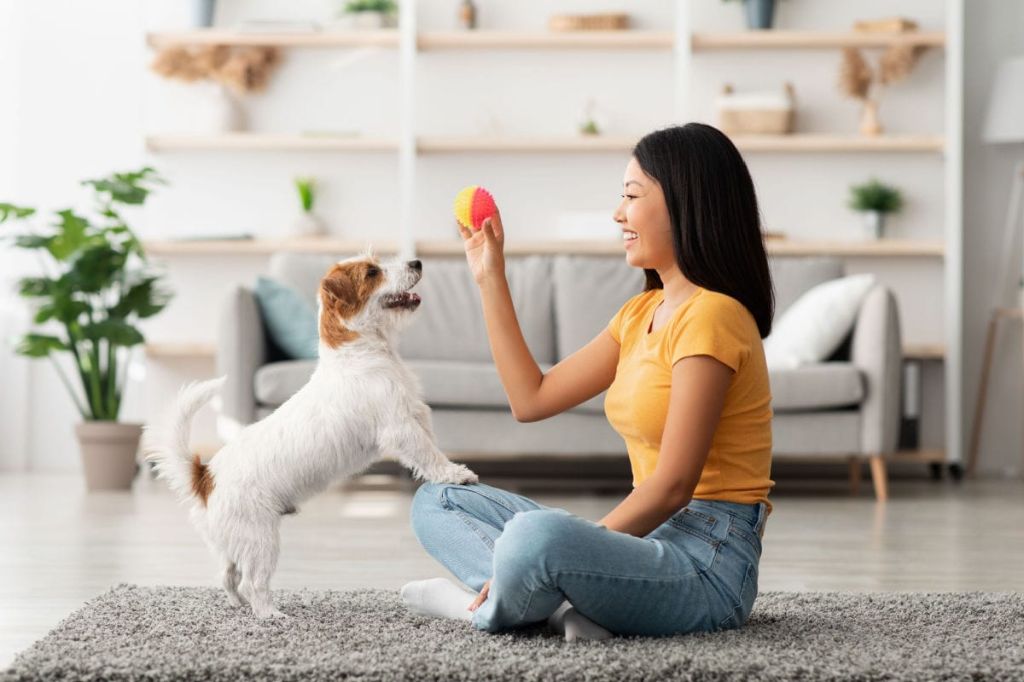
If your dog exhibits severe resource guarding such as growling, snapping, or biting when approached while eating or playing with a toy, it’s crucial to consult a professional dog trainer or behaviorist. They can evaluate your dog’s specific triggers and body language and design an effective behavior modification plan (Source).
Avoidance is a key component in addressing severe guarding. Do not attempt to take items away from or approach your dog when they are actively guarding. This can worsen the behavior over time. Provide your dog with their own private space for eating and chewing, and do not allow children or other pets to interact with them during these times.
In some cases, medication may be necessary in conjunction with training and behavior modification. Your veterinarian can prescribe anti-anxiety medication or other drugs to help lower your dog’s guarding response threshold. However, medication alone will not solve resource guarding, and should be used alongside gradual training techniques.
Management Tips
To minimize risk and prevent resource guarding behaviors from escalating, it is essential to manage interactions around high-value items. Here are some tips:
- Supervise your dog closely when they have access to items they guard like toys, food or beds. Do not leave them unattended with these items.
- Remove access or restrict access to guarded items by using baby gates or crates.
- Feed dogs separately to avoid food aggression over bowls. Pick up bowls when feeding time is over.
- During playtime, have your dog drop items before throwing their toy again or giving a treat. This teaches them to release an item on cue.
- Rotate toys access so toys remain novel and interesting. Don’t leave guarded toys out all the time.
- Don’t physically force items from your dog’s mouth as this can increase guarding behavior. Use treats and praise if they voluntarily give up an item.
Children and Resource Guarding
Resource guarding can pose serious risks when children are in the home. Children often do not understand dog body language and may unknowingly trigger aggressive behavior from the dog. Adults must supervise all interactions between children and dogs exhibiting guarding behavior.
Teach children proper etiquette around the dog, such as not reaching for items in the dog’s possession, not hugging or restraining the dog, and not startling or cornering the dog. Children should also be taught to recognize signs of discomfort in the dog like lip licking, yawning, whale eyes, and tense body posture.
Never force interactions between the child and dog. Interactions should happen at the dog’s pace and comfort level. Children can be taught to toss treats to the dog from a distance to build positive associations.
For more tips, see “Living with a Dog that Resource Guards” from PAWS Chicago: [url]https://www.pawschicago.org/fileadmin/media/images/News_Resources/Dog_Training_Protocols/DogResource_Resource_Guarding_2019-web.pdf[/url]
Adult Dogs Adopted with Guarding
Adopting an adult dog that already exhibits resource guarding can be challenging but it’s important not to punish the behavior. The first step is to schedule a vet check to rule out any underlying medical causes for the guarding [1]. Then focus on positive reinforcement training and go slowly with introductions to potential trigger objects or situations. Give the dog space when eating and don’t attempt to take away food or toys. Instead, trade for something of equal or higher value. Set up structured training sessions to condition the dog to willingly give up items upon request in exchange for a reward. Avoid scolding, startling, or taking items by force as this can worsen guarding behavior. Be patient and allow the adult dog time to learn to feel safe and gain confidence. Management and gradual counterconditioning are key when adopting dogs with an existing tendency toward resource guarding.
Conclusion
To summarize, resource guarding is a natural but undesirable behavior where dogs feel the need to protect their possessions from people and other pets. While it’s normal for dogs to be protective over toys or food, it can become problematic if the guarding leads to aggression or prevents you from safely interacting with your dog.
The key to addressing resource guarding is being proactive. Prevent it by socializing your puppy from an early age, hand-feeding meals, and positively reinforcing relinquishing items. If mild guarding develops, use management techniques like removing items and reward-based training to teach “drop it.” More serious cases require professional help using desensitization and counterconditioning.
With time, patience and consistency, you can modify your dog’s guarding behavior. Training should always emphasize positive reinforcement, never punishment. Successfully preventing resource guarding allows you to peacefully enjoy life with your beloved companion.

